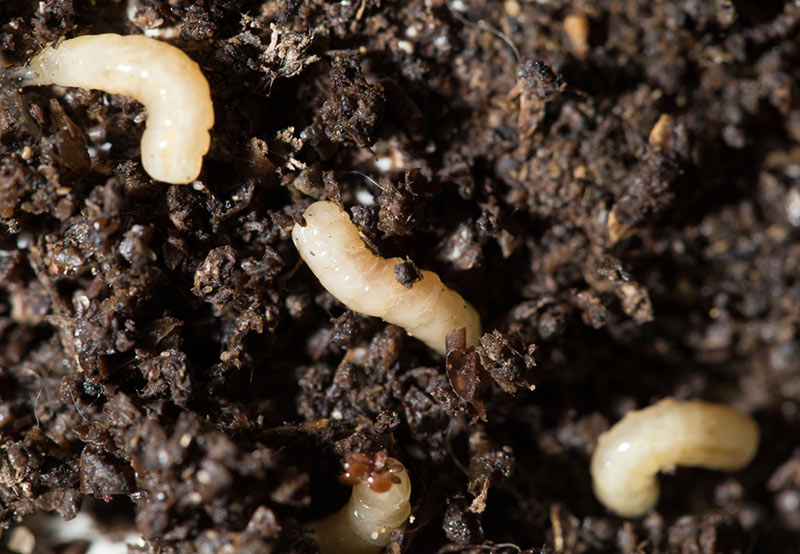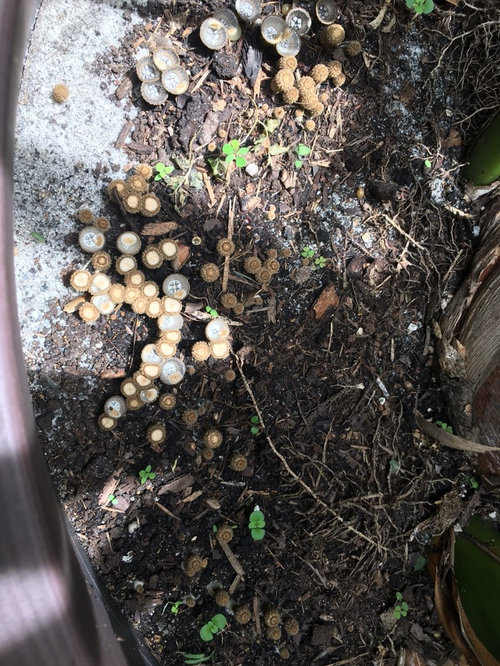What Are These Tiny Eggs and Why Are They in My Soil?
When digging in the garden or potting soil, it’s not uncommon to stumble upon tiny white eggs. These small, oval-shaped eggs are often no larger than a grain of sand, making them easy to overlook. However, their presence can be a sign of a larger ecosystem at work, with various insects playing a crucial role in the soil’s food chain. The discovery of tiny white eggs in soil can spark curiosity and raise questions about their origin and purpose. As you delve deeper into the mystery of these eggs, you’ll uncover a complex web of relationships between insects, microorganisms, and the soil itself.
Identifying the Culprits: Common Insects That Lay White Eggs
Several insects are known to lay tiny white eggs in soil, and understanding their habits and characteristics can help gardeners better manage their presence. Fungus gnats, for instance, are common culprits behind tiny white eggs in soil. These small, dark-colored flies thrive in moist environments and lay their eggs near the soil surface. The larvae of fungus gnats feed on fungi, algae, and other microorganisms, which can be beneficial for the soil ecosystem. Springtails, another type of insect, are also known to lay white eggs in soil. These tiny, wingless insects are often found in moist, organic-rich soils and feed on decaying plant matter. Ants, particularly species like the little black ant, can also lay white eggs in soil. These eggs are typically found in clusters near ant colonies and can be a sign of a larger infestation. By understanding the habits and characteristics of these insects, gardeners can take steps to manage their populations and maintain a healthy soil environment.
How to Inspect Your Soil for Tiny Eggs and Insect Activity
To determine if tiny white eggs in soil are present in your garden, it’s essential to inspect the soil regularly. The best time to inspect is during the spring and summer months when insect activity is highest. Start by gently digging into the soil with a trowel or small shovel, taking care not to disturb the surrounding area. Look for tiny, oval-shaped eggs that are usually white or translucent. Check for signs of insect activity, such as small tunnels or burrows, and inspect the soil surface for insects or larvae. When inspecting, pay attention to areas with high moisture levels, as these are often attractive to insects that lay tiny white eggs in soil. Additionally, inspect areas with decaying organic matter, as these can be breeding grounds for insects. By regularly inspecting your soil, you can identify potential issues early on and take steps to manage insect populations and maintain a healthy soil environment.
The Role of Soil Quality and Moisture in Attracting Egg-Laying Insects
Soil quality and moisture levels play a significant role in attracting insects that lay tiny white eggs in soil. Insects such as fungus gnats, springtails, and ants are drawn to soils with high organic matter content, adequate moisture, and optimal pH levels. Soils with poor drainage, compacted soils, or those with excessive nitrogen levels can also attract these insects. For instance, fungus gnats thrive in moist, humid environments with abundant organic matter, making them more likely to lay tiny white eggs in soil with these conditions. On the other hand, ants prefer well-draining soils with adequate moisture, making them more likely to infest soils with these characteristics. By understanding the relationship between soil quality, moisture levels, and insect activity, gardeners can take steps to create an environment that discourages the presence of these insects or encourages beneficial insects that prey on them. For example, improving soil structure, increasing biodiversity, and promoting beneficial microorganisms can help create a balanced ecosystem that reduces the likelihood of tiny white eggs in soil.
Are These Eggs Harmful to My Plants or Garden Ecosystem?
The discovery of tiny white eggs in soil can raise concerns about the potential impact on plants and the garden ecosystem. While some insects that lay these eggs can be beneficial, others can be detrimental to plant health. For instance, fungus gnats can feed on plant roots, causing damage and reducing plant growth. Springtails, on the other hand, are generally harmless to plants and can even help break down organic matter. Ants, which also lay tiny white eggs in soil, can be beneficial in some cases, as they help control pest populations, but they can also be a nuisance if they infest gardens in large numbers. It’s essential to understand the specific insects present in the soil and their potential impact on the garden ecosystem. By doing so, gardeners can take targeted measures to mitigate any negative effects and create a balanced ecosystem that supports plant growth and overall garden health. In some cases, the presence of tiny white eggs in soil can even be a sign of a healthy, thriving ecosystem, as it indicates the presence of beneficial insects and a balanced food chain.
Organic and Integrated Pest Management Strategies for Controlling Insect Populations
When it comes to controlling insect populations that lay tiny white eggs in soil, gardeners have a range of organic and integrated pest management (IPM) strategies at their disposal. Physical barriers, such as fine-mesh screens or row covers, can prevent adult insects from laying eggs in the soil. Biological controls, like introducing natural predators or parasites of the target insects, can also be effective. For example, introducing beneficial nematodes can help control fungus gnat populations. Cultural practices, such as adjusting soil moisture levels, improving soil structure, and promoting beneficial microorganisms, can also help deter insects that lay tiny white eggs in soil. Additionally, using organic pesticides, like neem oil or pyrethrin, can provide a targeted approach to controlling insect populations. By combining these strategies, gardeners can create a comprehensive IPM plan that minimizes the use of chemical pesticides and fosters a balanced ecosystem. By adopting these approaches, gardeners can reduce the presence of tiny white eggs in soil and create a healthy, thriving garden ecosystem.
Preventing Future Infestations: Tips for Maintaining a Healthy Soil Environment
To prevent future infestations of tiny white eggs in soil, it’s essential to maintain a healthy soil environment that promotes beneficial microorganisms and deters pests. One key strategy is to improve soil structure by adding organic matter, such as compost or well-rotted manure, which can help increase the soil’s water-holding capacity and aeration. This can make the soil less appealing to insects that lay tiny white eggs in soil. Additionally, increasing biodiversity by planting a diverse range of crops and flowers can help attract beneficial insects that prey on pests. Another approach is to promote beneficial microorganisms, such as mycorrhizal fungi, which can help plants absorb nutrients more efficiently and reduce their susceptibility to pests. By adopting these strategies, gardeners can create a balanced ecosystem that minimizes the presence of tiny white eggs in soil and fosters healthy plant growth. Regularly monitoring soil health and adjusting management practices accordingly can also help prevent future infestations. By taking a proactive approach to soil management, gardeners can reduce their reliance on pesticides and create a thriving garden ecosystem.
Conclusion: Embracing the Complexity of Soil Ecosystems
In conclusion, the discovery of tiny white eggs in soil can be a fascinating and intriguing experience for gardeners. By understanding the common insects that lay these eggs, inspecting soil for signs of insect activity, and adopting organic and integrated pest management strategies, gardeners can effectively manage insect populations and maintain a healthy soil environment. It’s essential to recognize that tiny white eggs in soil are a natural part of the soil ecosystem and can have both positive and negative impacts on plants and the garden ecosystem. By embracing the complexity of soil ecosystems and adopting a holistic approach to gardening and soil management, gardeners can create a balanced and thriving ecosystem that minimizes the presence of tiny white eggs in soil and fosters healthy plant growth. By following the tips and strategies outlined in this article, gardeners can take a proactive approach to soil management and create a garden ecosystem that is resilient, diverse, and productive.







